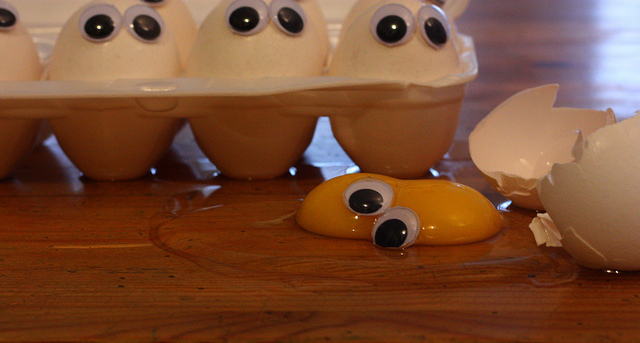When doing new work, you’ll be wrong.
 When doing something from the first time you’re going to get it wrong. There’s no shame in that because that’s how it goes with new work. But more strongly, if you don’t get it wrong you’re not trying hard enough. And more strongly, embrace the inherent wrongness as a guiding principle.
When doing something from the first time you’re going to get it wrong. There’s no shame in that because that’s how it goes with new work. But more strongly, if you don’t get it wrong you’re not trying hard enough. And more strongly, embrace the inherent wrongness as a guiding principle.
Take Small Bites. With new work, a small scope is better than a large one. But it’s exciting to do new work and there’s a desire to deliver as much novel usefulness as possible. And, without realizing it, the excitement can lead to a project bloated with novelty. With the best intentions, the project team is underwater with too much work and too little time. With new work, it’s better to take one bite and swallow than three and choke.
Ratchet Thinking. With new work comes passion and energy. And though the twins can be helpful and fun to have around, they’re not always well-behaved. Passion can push a project forward but can also push it off a cliff. Energy creates pace and can quickly accelerate a project though the milestones, but energy can be careless and can just as easily accelerate a project in the wrong direction. And that’s where ratchet thinking can help.
As an approach, the objective of ratchet thinking is to create small movements in the right direction without the possibility of back-sliding. Solve a problem and click forward one notch; solve a second problem and click forward another notch. But, with ratchet thinking, if the third problem isn’t solved, the project holds its ground at the second notch. It takes a bit more time to choose the right problem and to solve it in a way that cannot unwind progress, but ultimately it’s faster. Ratchet thinking takes the right small bite, chews, swallows.
Zero Cost of Change. New work is all about adding new functions, enhancing features and fixing what’s broken. In other words, new work is all about change. And the faster change can happen, the faster the product/service/business model is ready for sale. But as the cost of change increases the rate of changes slows. So why not design the project to eliminate the cost of change?
To do that, design the hardware with a bit more capability and headroom so there’s some wiggle room to handle the changes that will come. Use a modular approach for the software to minimize the interactions of software changes and make sure the software can be updated remotely without customer involvement. And put in place a good revision control (and tracking) mechanism.
Doing new work is full of contradictions: move quickly, but take the time to think things through; take on as much as you can, but no more; be wrong, but in the right way; and sometimes slower is faster.
But doing new work you must.
image credit – leasqueaky
 Mike Shipulski
Mike Shipulski